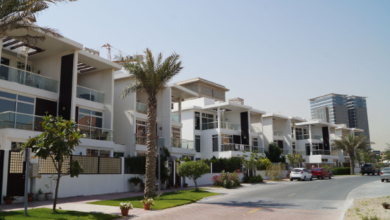Restaurant Design: A Key Ingredient in the Recipe for Success

Introduction
Dining Out is an event that combines taste, ambiance, service, and atmosphere to create a lasting impression. The design of a restaurant plays a vital role in this process. It sets the tone and creates a mood that complements the cuisine and service. In this article, we will explore the importance of restaurant design and how it contributes to the success of a restaurant.
Creating a Memorable Experience
The design of a restaurant creates a memorable experience that customers can associate with the brand. A well-designed restaurant is not just a place to eat; it’s an extension of the restaurant’s brand. Every element of the design, from the decor to the lighting, should be carefully curated to ensure that it reinforces the restaurant’s identity and enhances the dining experience.
For example, a fine dining restaurant might have an elegant interior with plush seating and soft lighting to create a luxurious and intimate ambiance. On the other hand, a casual dining restaurant might have a bright and colorful decor with communal seating to encourage socializing and a relaxed atmosphere. Whatever the design, it should reflect the restaurant’s brand and create a memorable experience for customers.
Maximizing Space and Functionality
Restaurant design is also about maximizing the use of space and functionality. A well-designed restaurant should be able to accommodate a large number of customers while still providing a comfortable and enjoyable experience. The layout of the restaurant, the placement of tables and chairs, and the flow of traffic all play a critical role in maximizing the use of space and functionality.
For example, a fast-food restaurant might have a simple layout with a self-service counter and a few tables and chairs. In contrast, a fine dining restaurant might have a more complex layout with a reception area, a bar, and multiple dining areas. Regardless of the restaurant’s size or complexity, the design should ensure that customers can move around comfortably, staff can work efficiently, and the restaurant can accommodate the maximum number of customers possible.
Lighting and Acoustics
Lighting and acoustics are two critical design elements that can significantly impact the dining experience. The lighting should be bright enough for customers to see the food but not so bright that it creates an uncomfortable ambiance. Similarly, the acoustics should be carefully considered to ensure that the noise level is appropriate for the restaurant’s atmosphere.
For example, a fine dining restaurant might have soft lighting and low noise levels to create an intimate and romantic atmosphere. In contrast, a family-friendly restaurant might have brighter lighting and a higher noise level to create a more relaxed and casual atmosphere. Whatever the ambiance, the lighting and acoustics should complement the design and create a comfortable environment for customers.
The Importance of Color and Texture
Color and texture are two essential design elements that can significantly impact the dining experience. The colors used in the restaurant’s decor can evoke specific emotions and set the tone for the dining experience. Similarly, the texture of the materials used in the decor can create a tactile experience that adds to the overall ambiance.
For example, a restaurant that wants to create a relaxing and calming atmosphere might use soft blues and greens in its decor. In contrast, a restaurant that wants to create a bold and energetic atmosphere might use bright reds and oranges in its decor. Whatever the colors and textures used, they should reflect the restaurant’s brand and create a cohesive and enjoyable dining experience for customers.
Creating a Sense of Community
Finally, restaurant design is also about creating a sense of community among customers. A well-designed restaurant should encourage socializing and interaction among customers, creating a sense of belonging and community. This can be achieved through the use of communal seating, open kitchens, and other design elements that encourage interaction and engagement.
For example, a restaurant that specializes in family-style dining might have large tables that can accommodate multiple groups of customers, encouraging socializing and interaction. In contrast, a restaurant that caters to couples might have more intimate seating arrangements to create a romantic and private atmosphere.
Regardless of the seating arrangement, the design should encourage customers to engage with each other and create a sense of community. This can also be achieved through the use of open kitchens, where customers can watch the chefs prepare their meals and engage with the staff.
The Role of Technology in Restaurant Design
In recent years, technology has played an increasingly important role in restaurant design. From digital menus to mobile ordering and payment systems, technology has transformed the way customers interact with restaurants. Technology can also be used to enhance the dining experience, from personalized recommendations to interactive entertainment.
For example, some restaurants have implemented interactive tabletops that allow customers to order and pay for their meals, play games, and access social media. Similarly, some restaurants have implemented personalized recommendations based on customer preferences and past orders. These technological innovations can significantly enhance the dining experience and create a memorable experience for customers.
Conclusion
In conclusion, restaurant design is a critical ingredient in the recipe for success. A well-designed restaurant can create a memorable experience for customers, maximize space and functionality, and create a sense of community. Lighting, acoustics, color, texture, and technology are all essential elements that can significantly impact the dining experience. By carefully curating the design of their restaurant, restaurateurs can create a brand identity that customers will associate with their dining experience. Ultimately, a well-designed restaurant can contribute significantly to the success and longevity of a restaurant.




